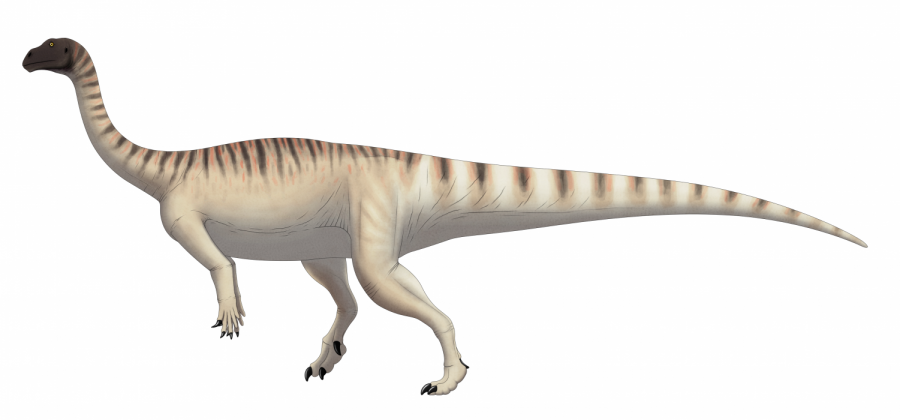Researchers in Argentina Found 193 Million Year Old Dinosaur Eggs
What the Mussaurus patagonicus is predicted to look like.
October 31, 2021
In Argentina, researchers are believed to have found a 193 million year old dinosaur nest containing 100 eggs, including 80 skeletons with some embryos still preserved. During an examination in a graveyard researchers have discovered these eggs lying around. Now, it has been claimed that the eggs are a distant cousin from the Brontosaurus called Mussaurus patagonicus.
With this new information gathered, scientists have been provided more knowledge than they could have idealized, in relation to the structures of these dinosaurs, concluding that this recent discovery is significant.
In a Scientific Reports journal, the interlocked study had said that the dinosaurs traveled in packs, within similar age groups, then later on dying in a drought. Though, an earlier excavate in the 1900s revealed Mussaurus patagonicus skeletons had only been determined to be 6 inches long. At the time scientists believed that the dinosaur had been adult therefore naming it “mouse lizard”, but have now been proven wrong.
In 2012, paleontologist Diego Pol decided to explore the dig sight area and found what is now believed to be an adult specimens, showing that the dinosaur could have weight just under 2 tons, reaching up to 26 feet. Pol says “I went to this site aiming to find at least one nice dinosaur skeleton,” and wound up finding something more than he expected. After finding the eggs he and his colleagues confirmed the species with x-ray technology. The investigation of the bones suggested that most of the dinosaur eggs had been buried together and that they were less than a year old.
Due to these results, researchers reconsidered what had been understood of these dinosaurs and altered what they had said about them living in the Triassic period and dying off during a mass extinction event. Instead they survived, and thrived due to their herding routine.


